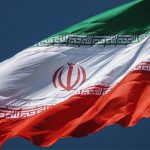A nuclear missile from India or Pakistan can hit the other country in seconds, cutting down on reaction time and increasing the chances of a catastrophic mistake.
India and Pakistan are on the brink of full-scale conflict after a terrorist attack against the Indian part of Kashmir resulted in Indian air strikes into Pakistan. In the hours since the strikes, Islamabad claims to have shot down five Indian fighter jets, while India continues to maintain a hard stance against its neighbor.
The animosity between India and Pakistan is hardly new. The two countries have fought three full-blown wars, and dozens of smaller skirmishes, since they became independent from the United Kingdom in 1947. However, they have both avoided full-scale war since 1998—after both nations secured nuclear weapons.
India Has a Modern Nuclear Arsenal—and a Full Nuclear Triad
According to the independent Stockholm International Peace Research Institute (SIPRI), India maintains approximately 172 nuclear munitions.
India was the first of the two to establish a nuclear arsenal. In 1974, the Indian military conducted its first successful nuclear test. Since then, New Delhi has been slowly building its nuclear arsenal with more modern and destructive munitions. Importantly, the Indian military maintains a full nuclear triad, with land-based, sea-based, and air-launched nuclear capabilities. The Indian military has ballistic missiles, fighter jets, and submarines capable of launching nuclear weapons. A nuclear triad capability all but ensures that if a country is attacked, it can respond in kind against the nuclear aggressor. Since any second strike would wipe out the nation that first fired nuclear weapons, this capability ensures “mutually-assured destruction” (MAD)—and is the reason that no full-scale war has ever taken place between two nuclear-armed states.
In terms of preparedness, “it has long been assumed that India stores its nuclear warheads separately from its deployed launchers” during peace, SIRPI noted in its latest review of the global nuclear arsenal.
New Delhi, however, has been moving in the opposite direction recently, i.e. “towards placing missiles in canisters and conducting sea-based deterrence patrols.” By pairing warheads with launchers, it is believed that India could quickly deploy a submarine-based nuclear weapon.
When it comes to policy, India has agreed to a “no first use” policy, meaning that it will only use nuclear weapons in response to a nuclear attack.
India was the seventh country in the world to acquire a nuclear capability, after the United States, Russia, the United Kingdom, France, China, and Israel (though Israel has never publicly acknowledged its nuclear program). It was also the first to do so outside the auspices of the 1968 Non-Proliferation Treaty, which it did not sign.
Pakistan’s Nuclear Arsenal Is Just as Deadly as India’s
Pakistan has a nuclear arsenal of approximately 170 nuclear weapons, keeping parity with its larger neighbor. The Southeast Asian country was second to the party and only established a nuclear arsenal in 1998. Since then, however, it has worked hard to close the gap with its neighbor and be ready to hold its own in a potential nuclear duel.
Pakistan is also working to develop a nuclear triad, with maturing land-, air-, and sea-based launch capabilities. As with India, a nuclear triad would ensure a second-strike capability.
Notably, Pakistan has not agreed to a “no first use” policy. Islamabad, however, has emphasized that its development of tactical nuclear weapons—intended for battlefield use, rather than for annihilating cities—would limit the destructive effects of a potential nuclear clash. Islamabad has used the threat of tactical nuclear weapons use to deter an invasion from India, whose ground forces are more powerful than Pakistan’s.
Neither Pakistan nor India is a signatory to the Non-Proliferation Treaty.
A nuclear conflict between India and Pakistan is particularly ominous due to their close proximity to one another. During the Cold War, both the United States and the Soviet Union had nuclear weapons ready at a moment’s notice, but the two countries were far enough away from each other that a nuclear missile launched from one would not hit for several minutes—giving nuclear operators time to check their detection systems for errors. Indeed, both countries had multiple nuclear false alarms during the decades-long conflict, in which thermonuclear war was narrowly averted by the quick thinking of nuclear personnel. But a nuclear missile from India or Pakistan can hit the other country in seconds, cutting down on reaction time and increasing the chances of a catastrophic mistake.
SIPRI’s annual report indicates that neither India nor Pakistan has nuclear weapons deployed, meaning that they are ready to be launched if necessary. However, in the event of a full-blown conflict, the two militaries could easily take out nuclear munitions from storage and prepare them for operational use.
About the Author: Stavros Atlamazoglou
Stavros Atlamazoglou is a seasoned defense journalist specializing in special operations and a Hellenic Army veteran (national service with the 575th Marine Battalion and Army HQ). He holds a BA from the Johns Hopkins University and an MA from the Johns Hopkins’ School of Advanced International Studies (SAIS). His work has been featured in Business Insider, Sandboxx, and SOFREP.
Image: Shutterstock / Vladirina32.














